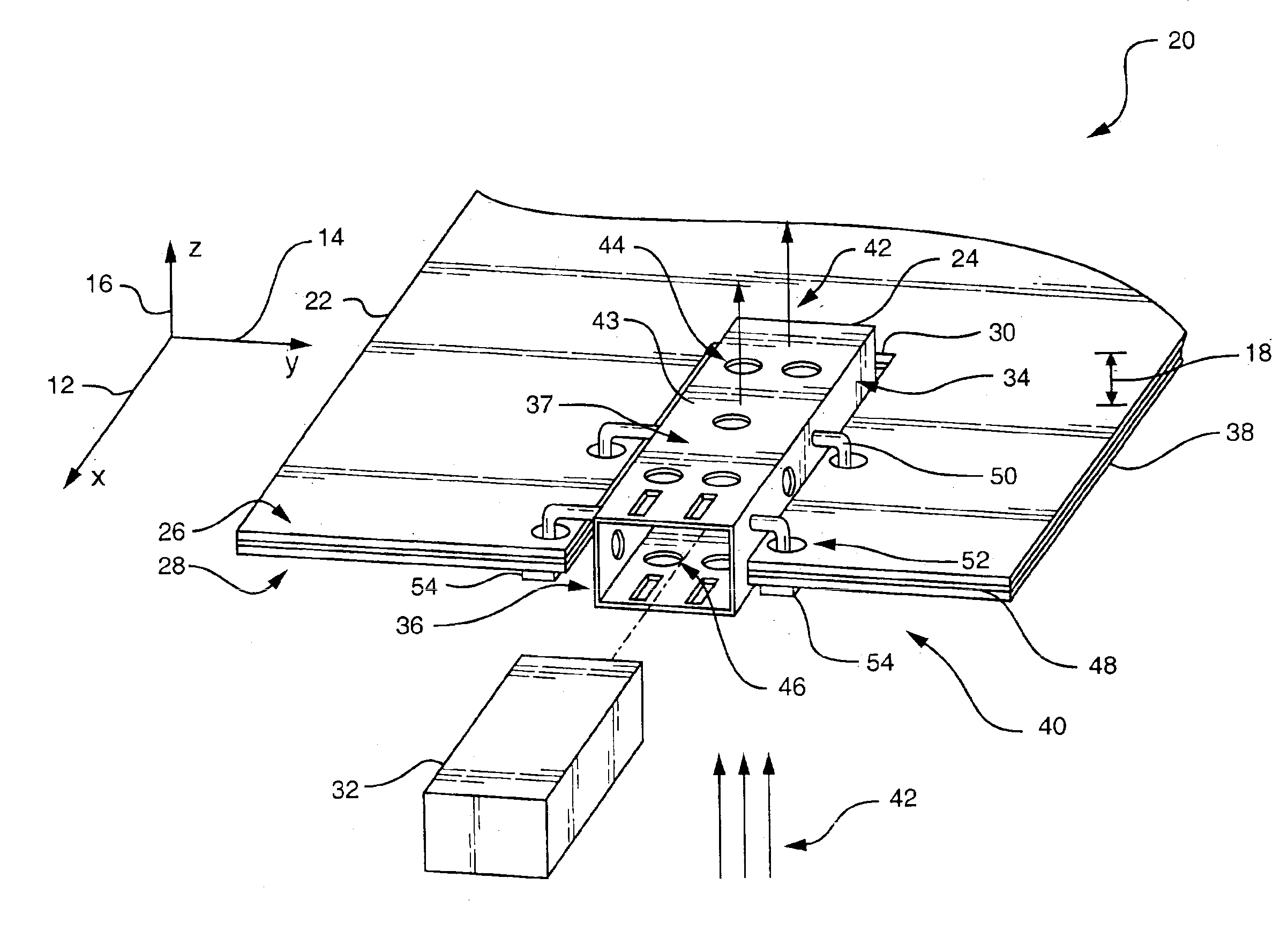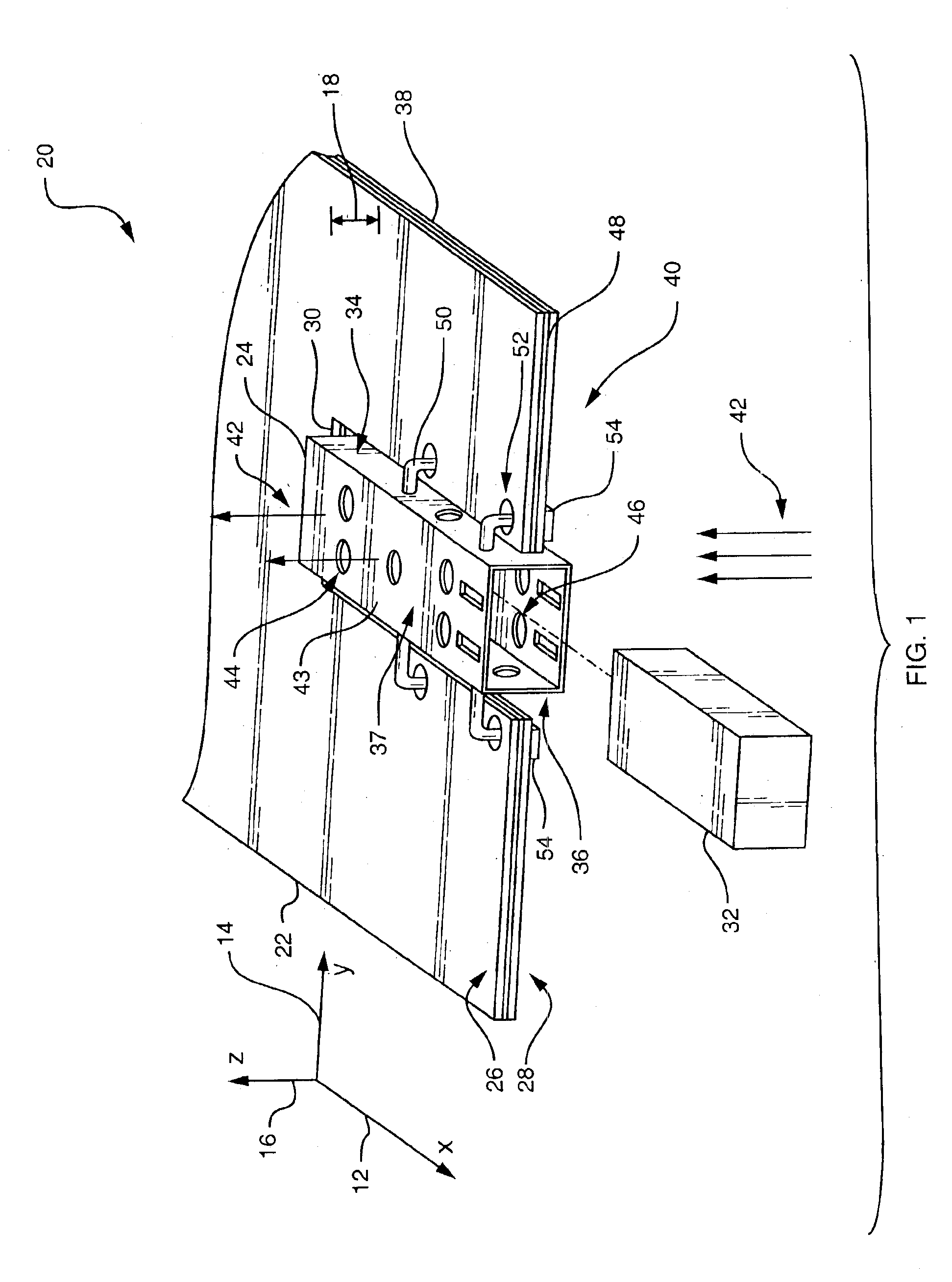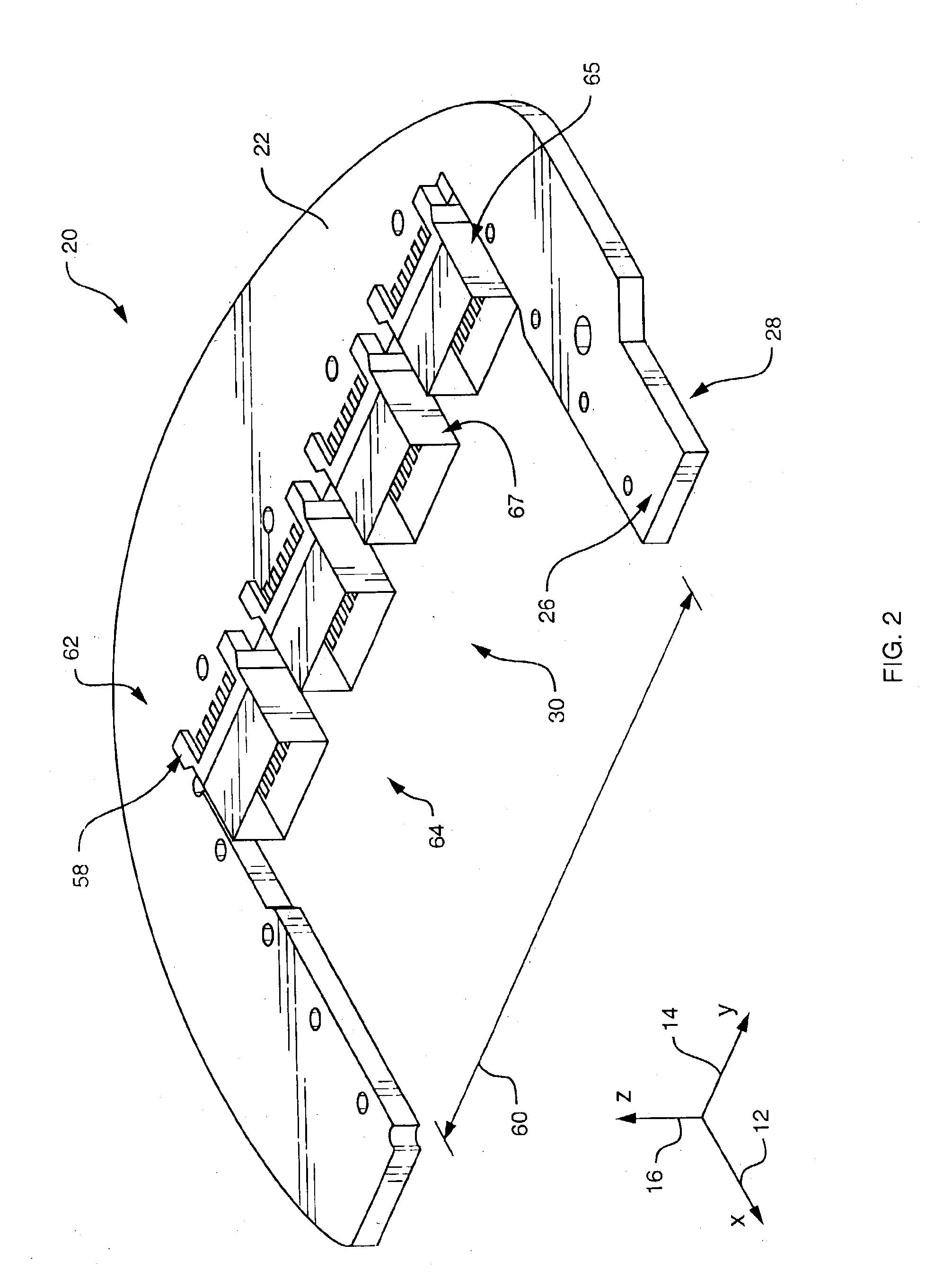Methods and apparatus for mounting an electromagnetic interference shielding cage to a circuit board
a technology of electromagnetic interference and shielding cage, which is applied in the direction of coupling device details, coupling device connection, coupling protective earth/shielding arrangement, etc., can solve the problems of module operation improperly or malfunction, limiting the heat dissipation of the transceiver module, etc., to reduce the cost of circuit board manufacture, minimize the amount of circuit board real estate, cost saving
- Summary
- Abstract
- Description
- Claims
- Application Information
AI Technical Summary
Benefits of technology
Problems solved by technology
Method used
Image
Examples
Embodiment Construction
The present invention relates to an EMI shield, or module cage, oriented within a plane of a circuit board such that a first portion of the module cage extends above a first planar surface of the circuit board and a second portion of the module cage extends below a second planar surface of the circuit board. The module cage surrounds a transceiver module and allows airflow to travel across the transceiver module and through the module cage in .a direction substantially perpendicular to a planar surface of the circuit board. Such a configuration aids in cooling of the transceiver module. Also, for a circuit board configured to utilize multiple transceiver modules, multiple module cages attach to the circuit board in a modular configuration. Such a configuration allows attachment, to the circuit board, of the number of module cages corresponding to the number of transceiver modules used by the circuit board (e.g., a circuit board configured to utilize up to four transceiver modules bu...
PUM
 Login to View More
Login to View More Abstract
Description
Claims
Application Information
 Login to View More
Login to View More - R&D
- Intellectual Property
- Life Sciences
- Materials
- Tech Scout
- Unparalleled Data Quality
- Higher Quality Content
- 60% Fewer Hallucinations
Browse by: Latest US Patents, China's latest patents, Technical Efficacy Thesaurus, Application Domain, Technology Topic, Popular Technical Reports.
© 2025 PatSnap. All rights reserved.Legal|Privacy policy|Modern Slavery Act Transparency Statement|Sitemap|About US| Contact US: help@patsnap.com



